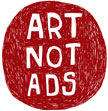1.15.2007
I haven't posted at all about Web 2.0 here at the revolution, which is kind of odd, because it really is what the revolution is all about.
Part of the reason for this is that for a long time I didn't really look too deeply past the surface idea of Web 2.0. It seemed to me like a nice sounding buzzword. However, the term has certainly taken hold, and I've just not mentioned it out of stubbornness.
Mea Culpa.
For some of you, this is probably a repetition of something that you read 5 years ago when this idea was still new. I'm sure my friends over at UTechTips will most likely give me all kinds of grief for jumping on the bandwagon this late in the game. However, this post is not for them, it is for you - the art teacher who uses technology in their classroom, but wants more.
My understanding of Web 2.0 (and there seems to be many interpretations) is that it is about the democratizing of information. It changes the way we do business, the way that we communicate, and the way we learn. Sites like wikipedia turn information control over to the users. Blogging allows anyone with internet access to be a journalist or web-published author. Flickr introduces new photographers to the world and YouTube introduces new filmmakers. Sure, there's a lot of junk out there, but there are a lot of gems as well.
Enter "School 2.0", a vision of "Web 2.0" as applied to the an educational community and built around the use of technology to enhance student learning. I could go into more specifics, but if you're not familiar with this concept, I highly recommend reading David Warlick's A Day in the Life of Web 2.0. I couldn't explain it any better than that - why try?
What I can do, however - what I hope I have been doing, and hope to continue to do - is talk about effective and interesting uses of technology in the art room. Art 2.0 is what the Carrot Revolution is all about.
I feel better now that I've said it.
I'll finish today's post with a practical example:
We've mentioned the use of ipods in the classroom before. One of the first posts here at CR was about students creating their own audio guides for local museums using their ipods. How else can students use this technology? I am reading more and more about students (and other artists) keeping their portfolios on their ipods - ready to take out and show to a prospective school or client.
smARThistory has another answer to this question. Hosted by two art educators from the Fashion Institute of Technology,the smARThistory blog is more than just a resource for interesting videos about art history (although it is that as well). It also provides an excellent example for communicating with students. The website contains art history videos that students can watch on their own computers or download to their ipods. They have a walking tour that students can listen to on their pods outside of class. In addition, they have a wealth of interesting articles about art education and technology.
The kinds of things that they're producing over at smARThistory presents exciting possibilities to any art classroom. What other ways can we use ipods to communicate to our students, and have them communicate back to us?
Tags: Art History, Musings














